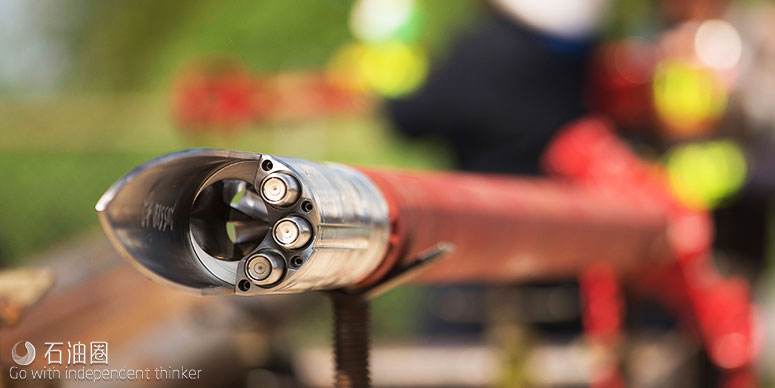Electric submersible pumps (ESPs) are often selected as the optimal artificial lift method. However, when run on heavy-jointed tubing, an ESP requires frequent rig or hoist interventions to replace failed systems. These interventions lead to significant production deferment, increased operating costs, and bring disruptions that often delay oil-generating drilling programs. Furthermore, there are significant safety and environmental risks associated with heavy well interventions that may be minimized, but never eliminated.
The ZEiTECS Shuttle* rigless ESP replacement system features a downhole electrical wet-connector technology that enables standard ESPs to be “shuttled” through tubing on wireline, coiled tubing, or sucker rods and plugged into a downhole docking station—all without a rig or hoist. Replacing ESPs without a rig minimizes production deferment, operating costs, HSE risks, and disruptions to operations.
The ZEiTECS Shuttle system also facilitates regular preventive maintenance and switching ESPs in response to changing reservoir conditions instead of waiting for failure. These measures help operators optimize production and increase ESP run life considerably.
Benefits of the ZEiTECS Shuttle System
Minimal production deferment
When ESPs fail unexpectedly, operators must often wait weeks—or even months—for rigs to become available to replace failed systems. Delays can be particularly lengthy in remote locations, and where short working seasons and hostile weather conditions limit workover windows. In contrast, wireline and coiled tubing units may typically be sourced in days. As a further benefit, rigless interventions may be completed in hours instead of days or weeks.
Increase production
The time delays associated with other ESP intervention methods substantially impact short- and long-term production goals. Rapid response with a rigless retrieval and redeployment system enables operators to quickly resume operations, achieve production targets, and increase the overall production profile of the well.
Reduced operating expenditure
Rig and hoist operating rates range from tens of thousands of dollars per day on land to hundreds of thousands of dollars per day offshore. Wireline and coiled tubing unit interventions are typically a small fraction of the rig cost and are quickly completed.
Minimal disruptions to operations
In addition to deferring production and increasing expenses, unplanned activity also increases operator workload and stress. Further production deferment is incurred when rigs are diverted from oil generating drilling, workover, or reservoir management activities.
Reduced HSE exposure and risk
Light interventions are quicker, safer, and involve fewer personnel than heavy workover operations, thereby reducing HSE exposure and risk. If wellsite security is an issue, decreased exposure time is also a significant benefit.
APPLICATIONS
Standard ESP wells with 7-in casing or larger
FEATURES
1.Rigless ESP retrieval with wireline, coiled tubing, or sucker rods;
2.Plug-and-play design with patented motor connector and docking station
3.Retrievable gauge for reservoir monitoring
4.Ability to accommodate multiple hydraulic control lines
5.Throughbore access below the docking station
Production Optimization and Reservoir Management
Production optimization
Because well conditions change, ESPs often end up operating outside of their ideal operating envelopes, resulting in decreased production and early failure. Rigless replacement technology provides operators a unique opportunity to optimize production by switching out the ESP for a system better suited to the well. Installing a temporary heavy-duty test ESP is an effective strategy to clean up the well, measure reservoir productivity, and help determine the most efficient ESP system to install for well conditions. The original ESP can be redeployed elsewhere.
Preventative maintenance
Rigless replacement technology can facilitate a preventative maintenance program to retrieve ESPs at regular intervals for inspection and service. The result is a reduction in unplanned failures and an increase in cumulative run lives. Furthermore, incremental deferment may be completely eliminated if preventative maintenance is planned to coincide with annual process shutdowns.
Intervention beneath the docking station
When the ESP is riglessly retrieved, intervention tools may be run through the docking station to service the reservoir and lower completion components. The ZEiTECS Shuttle system has sufficient throughbore to perform many intervention operations, including reperforation, production or reservoir logging, casing or cement assessment, coiled tubing stimulation, and zonal isolation.
System Components
Completion components
The docking station is deployed on the bottom of jointed tubing with cable clamped or banded to the outside. It houses three electrical wet-connector receptacles to supply power to the standard three-phase AC induction motor or permanent magnet motor. The docking station also has a facility to engage and rotate the motor connector to ensure that the wet-connectors align, and a landing surface to bear the weight of the retrievable string and the reactive forces generated by the ESP. An offset throughbore allows reservoir access.
Additional well control and completion equipment
The ZEiTECS Shuttle system is fully compatible with all standard completions components.
1.Formation isolation valves may be deployed to provide well control barriers and protect the reservoir during rigless intervention;
2.A chemical injection valve may be deployed to protect the completion against corrosion and scale;
3.A production packer may be deployed to protect all annular components (including the ESP cable) from pressure and temperature fluctuations and from corrosive liquids and gas.
Retrievable components
The motor connector is deployed at the base of the retrievable string and has three electrical wet-connectors. An alignment spear automatically aligns the connectors with the docking station.
Compatible with standard induction or permanent magnet motors, the ZEiTECS Shuttle system has a standard ESP configuration (pump, protector, motor, and optional gauge) that is run in a conventional orientation with the motor at the bottom.
The seal assembly includes two cup-type packers to prevent recirculation between pump intake and discharge. Slips engage the tubing wall to transfer some of the reactive forces to the tubing, preventing undue compression of the pump stack. The seal assembly also accommodates thermal expansion of the ESP and has an automatic bypass to allow the tubing to drain.

 石油圈
石油圈
